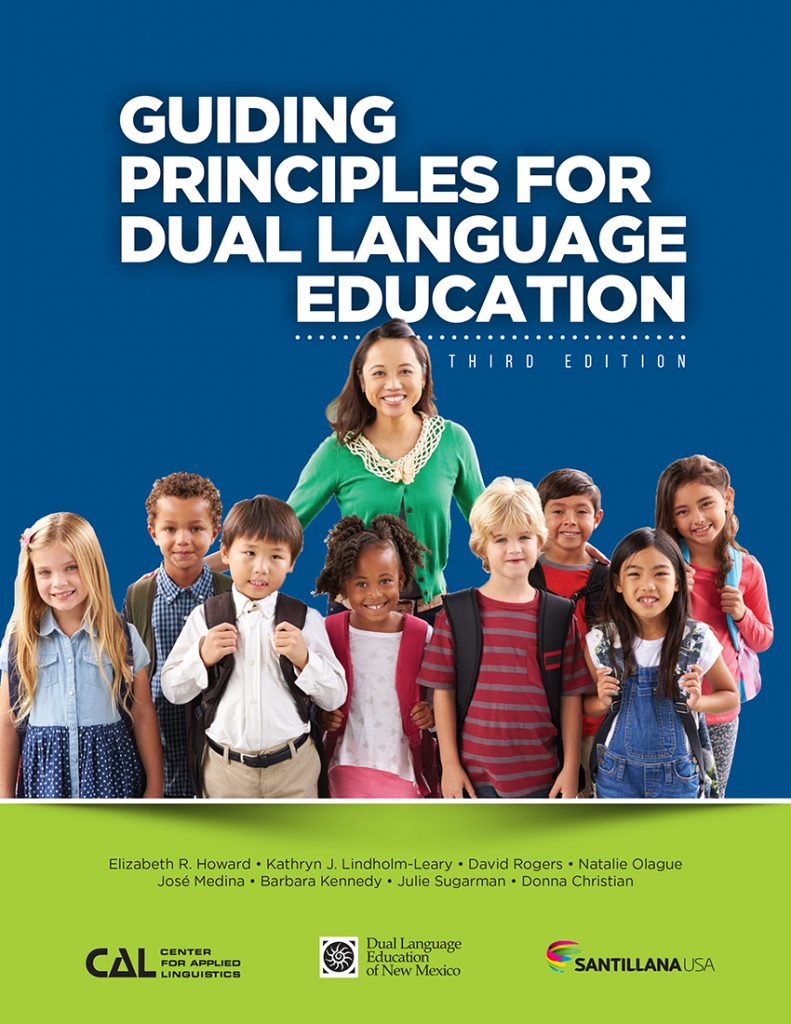Center for Applied Linguistics, Dual Language Education of New Mexico, and Santillana USA
Guiding Principles for Dual Language Education has been used for over a decade by dual language programs and educators across the United States as an effective tool for planning, self-reflection, and continual improvement. The third edition of this widely-used resource has been updated to reflect new knowledge, practices, and policies in the arena of dual language education.
Reflecting the experience and expertise of a broad range of dual language experts, including practitioners, researchers, administrators, professional development specialists, and others, this new edition includes enhancements to the principles reflecting learning from research and practice supported by updated literature reviews. Improvements were also made to the organization and formatting of the publication to increase its usability. Self-evaluation templates in the appendix now include space to record evidence to support the ratings given.
The principles are organized into seven strands:
- Program Structure
- Curriculum
- Instruction
- Assessment and Accountability
- Staff Quality and Professional Development
- Family and Community
- Support and Resources
Each strand is composed of two primary components.
- The first component of each strand is a review of relevant literature on research and best practices in dual language education.
- The second component of each strand consists of a series of guiding principles, each of which is broken down into several key points. Each key point includes progress indicators—descriptions of four possible levels of alignment with that point: minimal alignment, partial alignment, full alignment, and exemplary practice.
The literature reviews for each strand have been updated, most noticeably in the areas of curriculum and instruction, where most of the recent research has been carried out. Parallel changes reflecting the new research have been made to the relevant principles and their associated key points, addressing issues such as the role of technology in curriculum and instruction, approaches for coordinating instruction across languages, and incorporating cross-linguistic instructional strategies to promote the full development of bilingualism and biliteracy as well as content knowledge. Changes were also made throughout the strands to put greater focus on the importance of the third pillar of dual language education—the development of sociocultural competence.
The new edition is designed for educators, researchers, policymakers, and all who are interested in effective dual language education.

